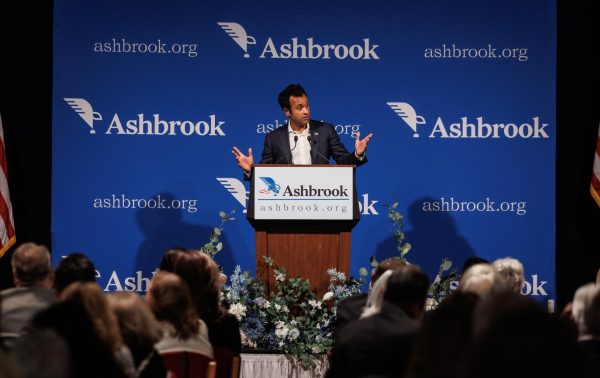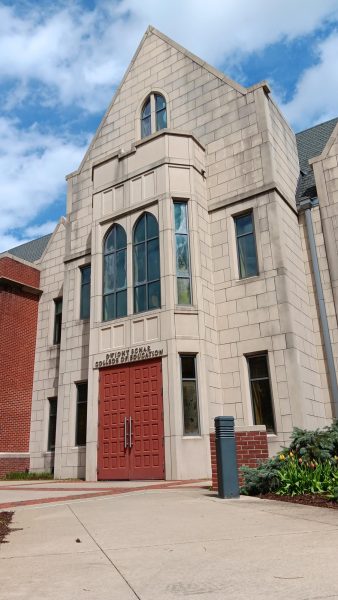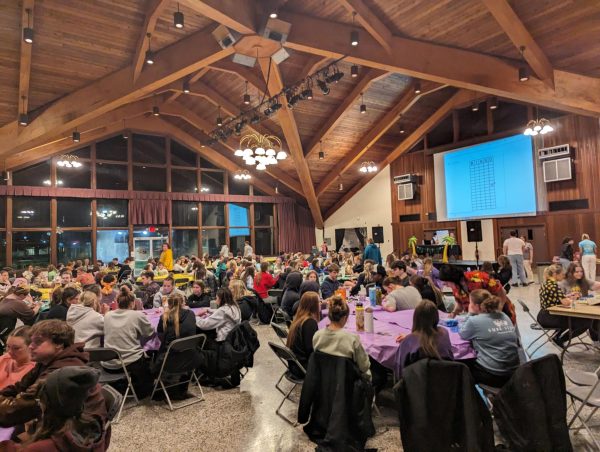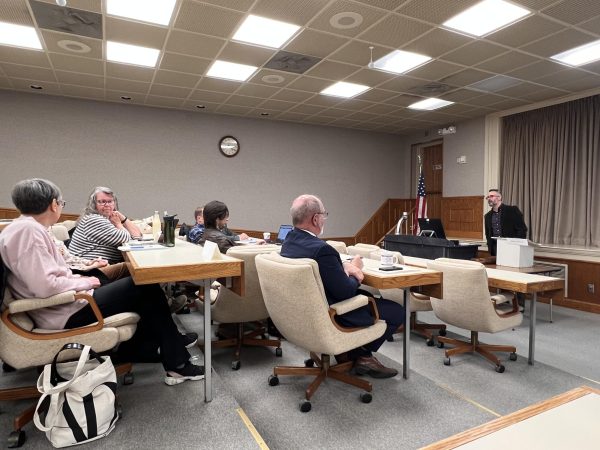The lonely building
December 1, 2011
It will never show up on a campus map and there are no markings to denote what the outbuilding adjacent to the late Miller Hall is for. The cracks in its brick façade and the black discoloration are almost kept secret behind a few small trees and some ground cover plants.
The biggest clue about what the building might be used for is the 8 inch pipe falling off its mounting bracket on the east side of the building. There is also the faint humming (almost huffing) noise that resonates inside that is fairly typical of natural gas pipes.
The door that opens to the footpath is about as blandly perplexing as doors come. The rust-brown colored paint obviously covers actual rust – the glossy paint looks almost matte with the imperfections that give it texture. The door’s handle is protected by a pair of older padlocks, only one of which loops through what looks like a crude hasp-and-staple.
On the opposite side, there is a second, almost hidden door that opens out onto the empty plot of land. This door almost tells a story of its own; nature has put it in disrepair. The door is almost completely rusted out, to the point that the once white paint is now stained a color very similar to that of the building’s other door.
Unlike the pathway door, however, this oxidized back door has a very simple pull handle, the kind that one would come across inside most other buildings. And it has a brand new Fortress padlock that glistens betwixt the rust.
Before Miller was demolished, the gashouse was hardly noticeable; it just looked like a part of the building itself. Even now, while it is nearly equidistant from Founders Hall and the Center for the Arts, the building does not stick out. Most students undoubtedly walk past on a daily basis without perception.
The cinder block structure is where the Columbia natural gas line comes into campus and it is from there that the gas is redistributed to each building. Basically, it houses a series of pipes, valves and a large meter regulating the university’s gas consumption.
Its gravel floor isn’t tread on often, though. Rick Ewing, vice president of facilities management and planning, said that Columbia can read the meter remotely, and the university doesn’t have much reason to go into the building.
“It is a pretty benign thing,” he said.
It’s almost in the way by being out of the way. Because of its role as a sort of gas distribution center, it could not be demolished along with Miller last winter.
While the building is probably not as old as Miller Hall was, it’s exterior bears great resemblance to its former neighbor.
Ewing and Columbia Gas have been working to find a way to relocate or do something different with the house.
“It just takes some time to work through those details,” Ewing said.











